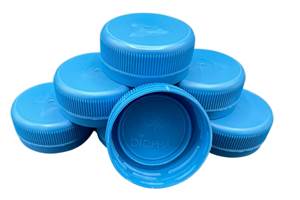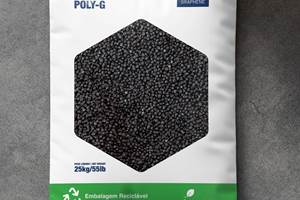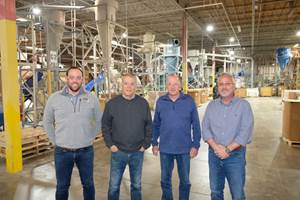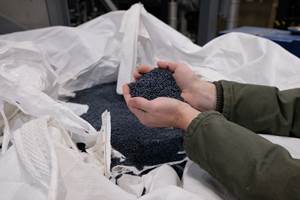Paving the Road to a Circular Economy
Sustainability and circular economy aren’t buzz words. They are and will continue to be the way of doing business for processors.
As a processor and a consumer of resin, we have a couple of articles in this issue that you hopefully will find timely, given the current price and availability of virgin raw materials.
The first begins on p. 52 of this issue and offers tips every processor should know when it comes to specifying material containing post-consumer reclaim (PCR). If you serve the packaging market in particular, running PCR is likely becoming a part of your everyday life. In a column that appeared in this magazine in November 2020, recycling guru Kim Holmes said it best, “What was once a display of voluntary stewardship, using recycled content is quickly becoming a requirement of doing business.”
The article in this issue, expertly crafted by sustainability experts Anna Rajkovic of resin producer Nova Chemicals and Tammy Rucker of recycler Revolution, is important because many processors have already come to realize that you most likely can’t simply “drop in” these resins on an existing line and expect things to come out fine and dandy without tweaking processing parameters. I go back in this industry to when LLDPE was new and billed as a “drop-in” replacement for LDPE on film extrusion lines. It really wasn’t, and I’ve been tad wary of those two words since.
Anyway, we’ve been trying to do our best in unraveling whatever mysteries remain for processors in working with PCR. Last April, we published a supplement on recycling that discussed the steps processors in injection molding, extrusion and blow molding are taking to add more PCR content in their products. We also had feature stories over the last couple of years on how and where twin-screw extruders fit in PCR, and how feeding systems need to be tweaked to handle this material. In an upcoming issue, we’ll cover how conveying systems need to be configured to optimize handling of PCR.
There’s another article on this issue about recycling that I think you’ll find interesting. It begins on p. 62 and discusses goings-on in chemical recycling. There’s a lot of them, as big money being put up by big companies to bring chemically recycling plants online. Chemical recycling falls under the category of a decomposition technology.
Holmes described the process thusly: “In a chemical or decomposition process, the complex chains that make up polymers are unzipped. The chemical bonds are broken, leaving monomers and other chemical building blocks to make new plastics. In this process, additives and colorants fall out of the process. Those neat chemicals and monomers can then be put back into reactors to make a recycled polymer identical to its virgin counterpart. Because these technologies yield the same products found in the supply chain of prime resin suppliers, this will be the enabling technology that meaningfully brings resin suppliers into the circularity loop.”
The current article details the level of investment that is going on now—and is planned for the future—to make chemical recycling a reality. It also discusses the extent to which the entire supply chain has been collaborating to commercialize products.
Words like sustainability and circular economy are here to stay. In fact, I think they will be words to live by in our industry. Plastics are under assault around the world. Nary a day passes when I don’t hear about a beach or body of water littered with plastics. These create indelible, negative perceptions that are virtually impossible to counter with “science.” This is especially true in the world of packaging. I can argue plastics vs. paper concerning bags, straws, etc. with the best of them. But it’s a tough one to win. Perception, they say, often trumps reality,
I don’t think there is one single solution to change this perception. Rather, I think it will be a combination of source reduction, material substitution and the various recycling technologies that are being deployed or under development now. And I’m delighted to be in the position of keeping you updated on what those solutions are.
Related Content
PHA Compound Molded into “World’s First” Biodegradable Bottle Closures
Beyond Plastic and partners have created a certified biodegradable PHA compound that can be injection molded into 38-mm closures in a sub 6-second cycle from a multicavity hot runner tool.
Read MoreGerdau Graphene Launches “First” Graphene-Enhanced PE Additive Masterbatch for Extruded Packaging and More
The company has also partnered with conglomerate Sumitomo Corp. for distribution of its graphene-enhanced masterbatches in Japan.
Read MoreEvolving Opportunities for Ambitious Plastics Recycler
St. Joseph Plastics grew from a simple grinding operation and now pursues growing markets in recycled PP, food-grade recycled materials, and customized post-industrial and post-consumer compounds.
Read MoreNew Facility Refreshes Post-Consumer PP by Washing Out Additives, Contaminants
PureCycle prepares to scale up its novel solvent recycling approach as new facility nears completion.
Read MoreRead Next
People 4.0 – How to Get Buy-In from Your Staff for Industry 4.0 Systems
Implementing a production monitoring system as the foundation of a ‘smart factory’ is about integrating people with new technology as much as it is about integrating machines and computers. Here are tips from a company that has gone through the process.
Read MoreHow Polymer Melts in Single-Screw Extruders
Understanding how polymer melts in a single-screw extruder could help you optimize your screw design to eliminate defect-causing solid polymer fragments.
Read MoreWhy (and What) You Need to Dry
Other than polyolefins, almost every other polymer exhibits some level of polarity and therefore can absorb a certain amount of moisture from the atmosphere. Here’s a look at some of these materials, and what needs to be done to dry them.
Read More


























